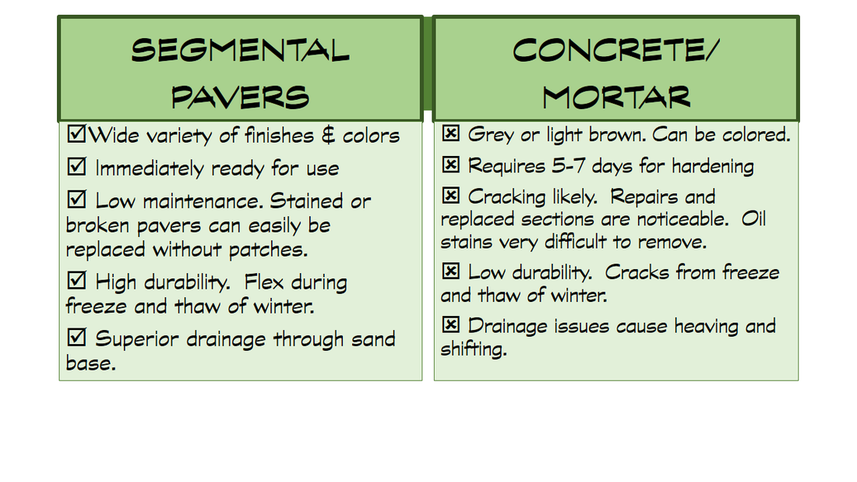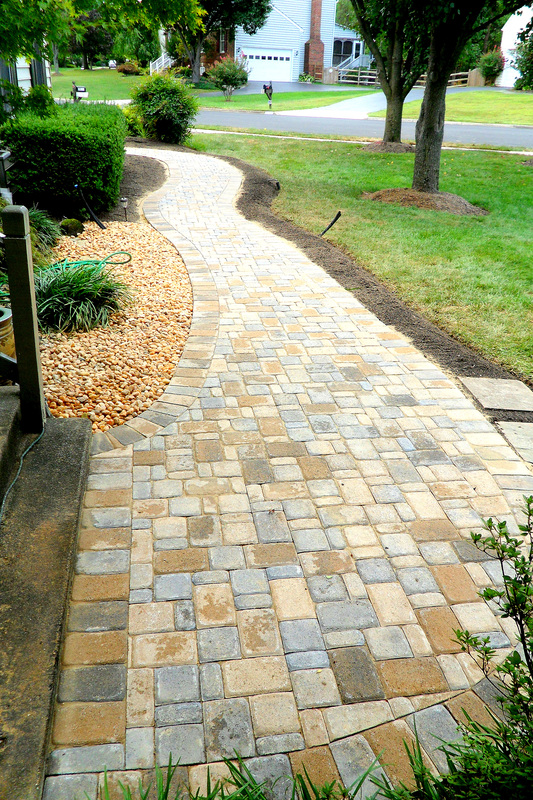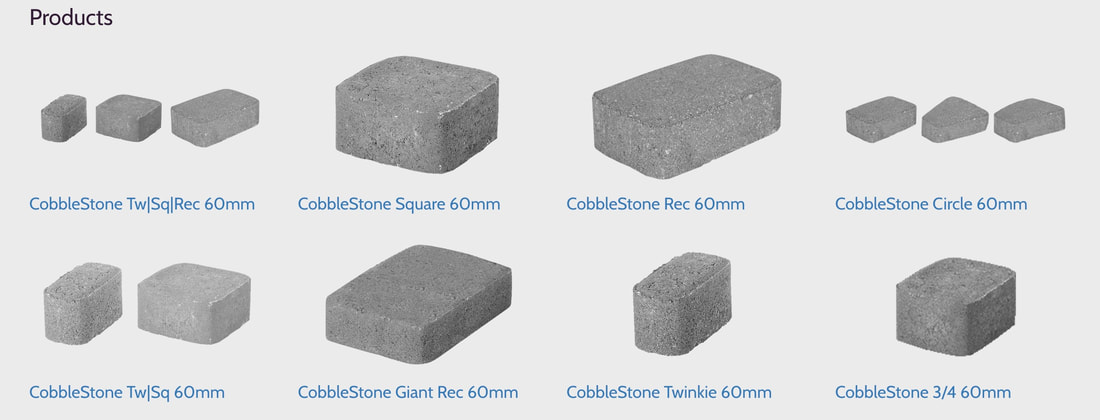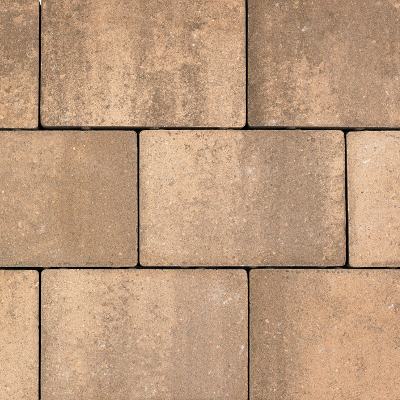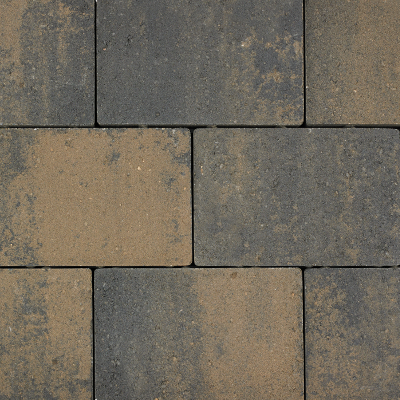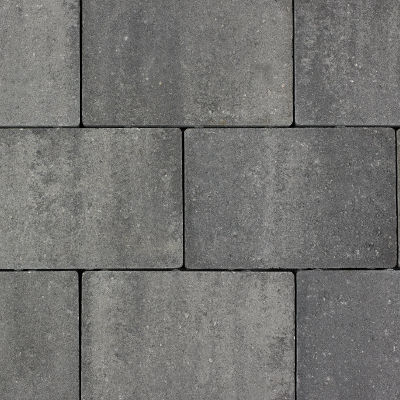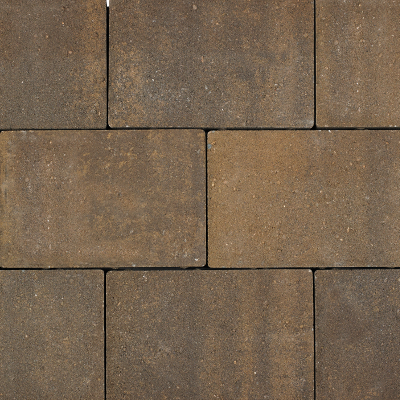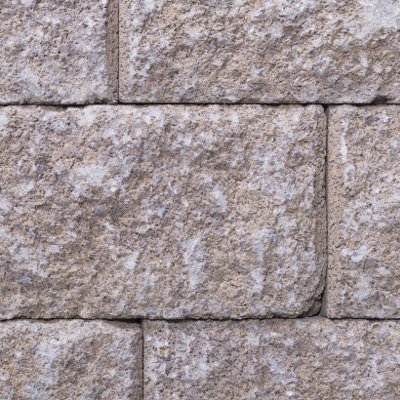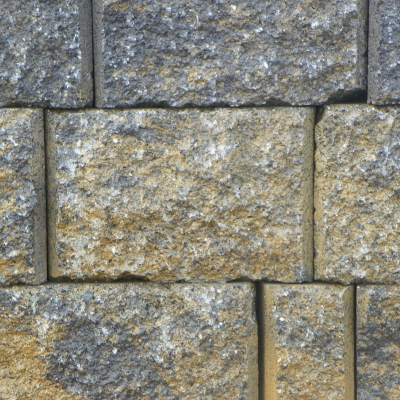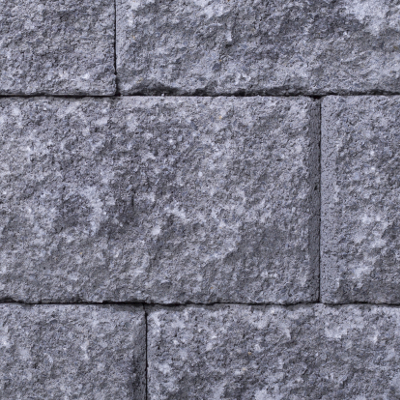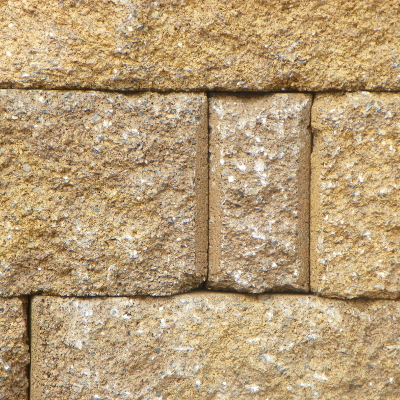Frequently Asked Questions
Walkways, Walls and Patios
The Process:
We proudly install paver walkways, walls, and patios. Obviously, pavers look nice and add certain curb appeal to any home and yard. But beyond that, in terms of durability, they make sense. Take a look at the comparison chart below:
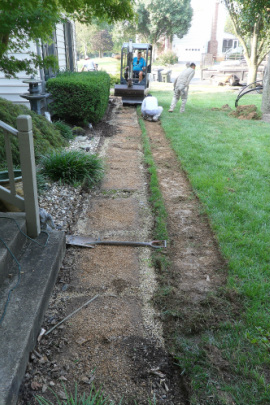
There are 4 labor-intensive steps to constructing the perfect paver walkway, patio, or wall. The following photos illustrate the process step by step...
Stage 1
Excavation of existing soil 4-6" deep (depending on soil type) and 6" beyond the perimeter of the designed walkway ensures that the pavers stay level. Most excavation sites require several yards of soil and debris to be removed and hauled off-site.
Stage 1
Excavation of existing soil 4-6" deep (depending on soil type) and 6" beyond the perimeter of the designed walkway ensures that the pavers stay level. Most excavation sites require several yards of soil and debris to be removed and hauled off-site.
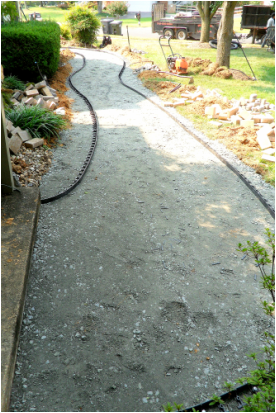
Stage 2
The soil is replaced with approximately 4-6" of compactable gravel made sturdy and level with a power plate compactor. A strong, deep base is essential to maximize the life of the walkway.
The soil is replaced with approximately 4-6" of compactable gravel made sturdy and level with a power plate compactor. A strong, deep base is essential to maximize the life of the walkway.
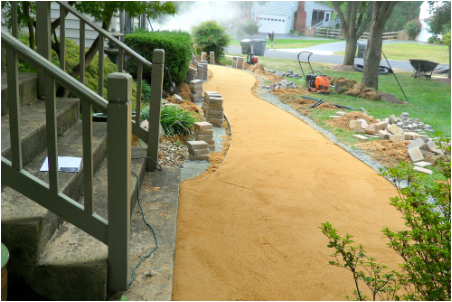
Stages 3 and 4
Sturdy plastic edging is installed along the perimeter of the walkway design. Then, a 1" layer of coarse sand is evenly applied over the compacted gravel, allowing the pavers to flex during the freezing and thawing throughout the year.
With the coarse sand as its firm foundation, the pavers are arranged in your preferred pattern. Finally, the power plate compactor is used to tamp them, forcing the sand through the joints and interlocking the pavers.
Sturdy plastic edging is installed along the perimeter of the walkway design. Then, a 1" layer of coarse sand is evenly applied over the compacted gravel, allowing the pavers to flex during the freezing and thawing throughout the year.
With the coarse sand as its firm foundation, the pavers are arranged in your preferred pattern. Finally, the power plate compactor is used to tamp them, forcing the sand through the joints and interlocking the pavers.
FREQUENTLY ASKED QUESTIONS ABOUT PAVER PRODUCTS
What makes pavers the best choice for driveways, walkways and patios?
Unlike asphalt and poured concrete, our pavers are virtually maintenance-free and do not need to be regularly sealed or replaced. Pavers are about three times stronger than regular poured concrete and have a maximum water absorption rate of 5%. Plus, you can use your new patio, walkway, or driveway immediately after compacting the pavers and sweeping with joint sand.
Will freezing and thawing damage pavers?
No, damage from ice is virtually non-existent. The joints allow the pavers to move without cracking in freeze-and-thaw cycles.
Will snow plows damage or dislodge my pavers?
No. Properly installed paving stones fit tightly together and form a uniform surface that presents no problem for plows, snowblowers, and shovels.
Will de-icing salts damage my pavers?
No. Our high-density concrete pavers resist deterioration from de-icing salts that are applied at the proper application rates.
If a paver gets chipped or damaged, can it be replaced?
Yes, very easily. We recommend that you save a few pavers from your initial installation, just in case you need to replace one or two. Pavers normally can be pried out using two flathead screwdrivers.
Is there a way to prevent weeds from growing between paving stones? Will landscape fabric or plastic sheeting help?
Weeds grow from wind-blown seeds that fall onto pavers and germinate down into joints. They do not grow up from below, so using landscape fabric or plastic sheeting is unnecessary. Weeds can be removed by hand or with a biodegradable herbicide. Sealers or sand binders can be useful in helping prevent weed growth.
Do pavers lose color with age?
For long-lasting, durable colors, concrete masonry stones are saturated with color throughout- not just on the surface. To achieve this, we blend pure pigment into our special concrete mixture, using only the finest iron oxides. Pigments used to color concrete paving stones and wall stones are very stable. Dirt, normal wear, and weathering may appear to change the color over time. Cleaning and sealing may restore and enhance color.
Will pavers be slippery?
No, their surface texture is ideal for obtaining safe traction in pedestrian, vehicular, and pool applications.
Unlike asphalt and poured concrete, our pavers are virtually maintenance-free and do not need to be regularly sealed or replaced. Pavers are about three times stronger than regular poured concrete and have a maximum water absorption rate of 5%. Plus, you can use your new patio, walkway, or driveway immediately after compacting the pavers and sweeping with joint sand.
Will freezing and thawing damage pavers?
No, damage from ice is virtually non-existent. The joints allow the pavers to move without cracking in freeze-and-thaw cycles.
Will snow plows damage or dislodge my pavers?
No. Properly installed paving stones fit tightly together and form a uniform surface that presents no problem for plows, snowblowers, and shovels.
Will de-icing salts damage my pavers?
No. Our high-density concrete pavers resist deterioration from de-icing salts that are applied at the proper application rates.
If a paver gets chipped or damaged, can it be replaced?
Yes, very easily. We recommend that you save a few pavers from your initial installation, just in case you need to replace one or two. Pavers normally can be pried out using two flathead screwdrivers.
Is there a way to prevent weeds from growing between paving stones? Will landscape fabric or plastic sheeting help?
Weeds grow from wind-blown seeds that fall onto pavers and germinate down into joints. They do not grow up from below, so using landscape fabric or plastic sheeting is unnecessary. Weeds can be removed by hand or with a biodegradable herbicide. Sealers or sand binders can be useful in helping prevent weed growth.
Do pavers lose color with age?
For long-lasting, durable colors, concrete masonry stones are saturated with color throughout- not just on the surface. To achieve this, we blend pure pigment into our special concrete mixture, using only the finest iron oxides. Pigments used to color concrete paving stones and wall stones are very stable. Dirt, normal wear, and weathering may appear to change the color over time. Cleaning and sealing may restore and enhance color.
Will pavers be slippery?
No, their surface texture is ideal for obtaining safe traction in pedestrian, vehicular, and pool applications.
FREQUENTLY ASKED QUESTIONS ABOUT EFFLORESCENCE
What is efflorescence?
There is a chance that after a few weeks or months, a white haze may appear on the surface of your paver walkway, wall, or patio. This is known as efflorescence. It may appear randomly or in certain areas and will be more pronounced on dark-colored pavers. The white haze may give the impression that the color of the pavers is fading. When wet, the white disappears and the color of the pavers is enhanced. When they dry, the white haze reappears. Efflorescence is completely natural and will disappear with time.
When will efflorescence stop?
When the supply of calcium hydroxide is exhausted. If you live in an area of frequent rain and sunny days, efflorescence and its passing may occur quickly. The process may take much longer in drier climates. Typically, efflorescence will stop developing in approximately 18 to 24 months.
Will it go away naturally?
Since many factors are involved in its formation, it is difficult to determine when efflorescence will stop. Just as it appears naturally, efflorescence will eventually disappear. Over time, rainwater can wash and wear it away. In urban areas with acidic rainfall, efflorescence may go away faster than in rural areas.
Can it be removed without the wait?
Yes, efflorescence may be cleaned with commercially available cleaners formulated specifically for concrete pavers. Cleaning should be performed immediately after efflorescence has appeared. It may reappear as long as the chemical reaction continues, and cleaning may need to be done until efflorescence has stopped. Most cleaners contain acid and detergents, so be sure to follow all label directions and environmental regulations. Careless or improper cleaning can result in injury, damage, and discoloration to the surface of the concrete pavers. Always conduct a test in a small, inconspicuous area before applying any cleaner to the entire area of concrete pavers. After cleaning, the pavers should be completely dry and free from efflorescence prior to applying any sealers.
There is a chance that after a few weeks or months, a white haze may appear on the surface of your paver walkway, wall, or patio. This is known as efflorescence. It may appear randomly or in certain areas and will be more pronounced on dark-colored pavers. The white haze may give the impression that the color of the pavers is fading. When wet, the white disappears and the color of the pavers is enhanced. When they dry, the white haze reappears. Efflorescence is completely natural and will disappear with time.
When will efflorescence stop?
When the supply of calcium hydroxide is exhausted. If you live in an area of frequent rain and sunny days, efflorescence and its passing may occur quickly. The process may take much longer in drier climates. Typically, efflorescence will stop developing in approximately 18 to 24 months.
Will it go away naturally?
Since many factors are involved in its formation, it is difficult to determine when efflorescence will stop. Just as it appears naturally, efflorescence will eventually disappear. Over time, rainwater can wash and wear it away. In urban areas with acidic rainfall, efflorescence may go away faster than in rural areas.
Can it be removed without the wait?
Yes, efflorescence may be cleaned with commercially available cleaners formulated specifically for concrete pavers. Cleaning should be performed immediately after efflorescence has appeared. It may reappear as long as the chemical reaction continues, and cleaning may need to be done until efflorescence has stopped. Most cleaners contain acid and detergents, so be sure to follow all label directions and environmental regulations. Careless or improper cleaning can result in injury, damage, and discoloration to the surface of the concrete pavers. Always conduct a test in a small, inconspicuous area before applying any cleaner to the entire area of concrete pavers. After cleaning, the pavers should be completely dry and free from efflorescence prior to applying any sealers.
FREQUENTLY ASKED QUESTIONS ABOUT HARDSCAPE LANDSCAPING
We understand that choosing the right hardscape landscaping service in Northern Virginia can be daunting. Our team at Superior Landscaping, Inc. is here to answer some of the most frequently asked questions about our hardscape landscaping, lawn extension services, and premier landscaping services in Northern Virginia.
What is hardscape landscaping, and how does it differ from traditional landscaping?
Hardscape landscaping involves designing, installing, and maintaining outdoor structures such as patios, walkways, and retaining walls. In contrast to traditional landscaping, which focuses mainly on plants and outdoor living spaces, hardscaping adds a structural dimension to your outdoor space.
What are the benefits of hardscape landscaping for Northern Virginia homes and businesses?
Hardscape landscaping can extend your living spaces, create functional outdoor areas for entertaining, and add value to your property.
What types of materials are commonly used in hardscape landscaping?
Some of the most popular materials used in hardscaping include natural stone, concrete, brick, and pavers. Our team will help you select the perfect materials for your project based on your budget, aesthetic preferences, and durability needs.
Will hardscape landscaping require maintenance?
Like any outdoor structure, hardscaping will require some maintenance. However, our team will work with you to ensure your hardscape is designed for minimal upkeep and maximum durability.
How do lawn extension services fit into your landscaping services?
Our lawn extension services involve using high-quality fertilizer and seed to help your grass grow thicker, greener, and healthier. A healthy lawn can complement your hardscape landscaping and create a picturesque outdoor environment.
Contact Superior Landscaping, Inc. today to schedule a consultation and learn how we can take your Northern Virginia outdoor space to the next level with our expert hardscape landscaping, lawn extension, and landscaping services.
What is hardscape landscaping, and how does it differ from traditional landscaping?
Hardscape landscaping involves designing, installing, and maintaining outdoor structures such as patios, walkways, and retaining walls. In contrast to traditional landscaping, which focuses mainly on plants and outdoor living spaces, hardscaping adds a structural dimension to your outdoor space.
What are the benefits of hardscape landscaping for Northern Virginia homes and businesses?
Hardscape landscaping can extend your living spaces, create functional outdoor areas for entertaining, and add value to your property.
What types of materials are commonly used in hardscape landscaping?
Some of the most popular materials used in hardscaping include natural stone, concrete, brick, and pavers. Our team will help you select the perfect materials for your project based on your budget, aesthetic preferences, and durability needs.
Will hardscape landscaping require maintenance?
Like any outdoor structure, hardscaping will require some maintenance. However, our team will work with you to ensure your hardscape is designed for minimal upkeep and maximum durability.
How do lawn extension services fit into your landscaping services?
Our lawn extension services involve using high-quality fertilizer and seed to help your grass grow thicker, greener, and healthier. A healthy lawn can complement your hardscape landscaping and create a picturesque outdoor environment.
Contact Superior Landscaping, Inc. today to schedule a consultation and learn how we can take your Northern Virginia outdoor space to the next level with our expert hardscape landscaping, lawn extension, and landscaping services.

We proudly install Keystone Hardscapes Paving Stones.
CLASSIC COBBLE:
CLASSIC COBBLE:

Keystone Hardscapes Wallstone System
Harrington:
Harrington:
